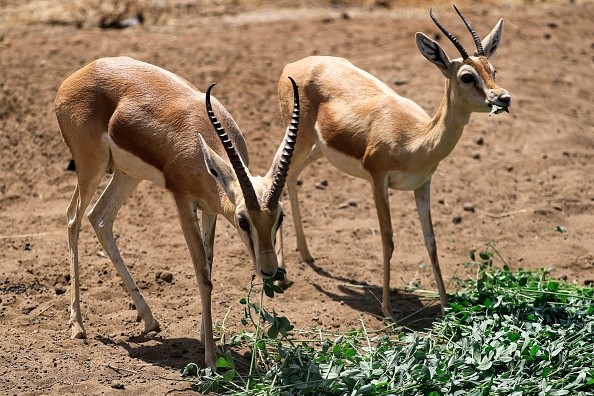An antelope herd grazes calmly in a grassland, but when a lion appears out of nowhere the herd escapes.
But how do they manage to do so as a group?
Chun-Jen Chen, a physicist at Konstanz University, and Professor Clemens Bechinger, who is part of the Cluster of Excellence "Centre for the Advanced Study of Collective Behaviour."
In a study involving microrobots that behave like swarms of animals, researchers demonstrate that a swarm of animals as a whole completes a faultless flight reaction.
Animals that detect predators

To avoid and respond to predation, animals must first notice the presence of a potential predator.
According to Nature, recognizing predator signals is required for the beginning of the anti-predator activity.
This can be inherent since animals can recognize predators as a threat even if they have never seen one before, or learned only after being exposed to a predatory threat.
Animals can respond to general indicators of predatory risks, such as sudden movement or the presence of a looming object, as well as species signals, like a scent or appearance, that allow them to discriminate between carnivorous and non-predatory animals.
Many animals rely on the availability of many signs to accurately estimate the level of threat.
Animals are more likely to respond if a higher number of cues are noticed, as this offers a more trustworthy indicator of a predator's existence and identification.
A micro-biotic swarm used for predators
The researchers began their analysis by visualizing a bunch of pleasantly spinning animals and what would happen if they were suddenly presented with a dangerous environment.
The researchers began their investigation by imagining a swarm of happily spinning creatures and what would happen if they were abruptly thrust into a threatening environment, as per ScienceDaily.
They can pinpoint each bead and adjust its motion to match that of its neighbors, says Chen, a Ph.D. student on Bechinger's study team who was principally responsible for finishing the experiments.
When a predator comes, the microrobots adjust their motions, according to Bechinger.
The shift in direction, however, is minor and does not lead each member of the swarm to move directly away from the predator at any one time.
This feat, in which individuals move in ways that are not optimal for each of them but where the group as whole acts optimally, is based on a collective judgment process or "swarm intelligence," according to Bechinger, in which information is constantly exchanged between different members of a group.
The research findings are useful for applications in the field of microrobotics as well as acquiring a better knowledge of the foundation for decision-making in groups of animals.
Several situations are currently being detailed in which a large number of autonomous robots collaborate to conduct meaningful work and where disturbances in communication amongst the robots cause issues.
With the insights gathered from this study, a robotic swarm may function successfully even if individual robot sensors failed, for example.
According to Chen, one immediate consequence of this behavior is that the efficacy of the flight reaction stays nearly identical even if half of the microrobots or animals do not respond to the threat.
This demonstrates that missing or partial information from individual group members may be compensated for by other members.
The physicists believe that this is one of the reasons why animals arrange themselves in herd seven though herds are far easier for predators to notice than individual animals.
Related article: Predator Decline Is Leaving Prey in a Thorny Situation
© 2025 NatureWorldNews.com All rights reserved. Do not reproduce without permission.





